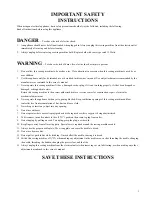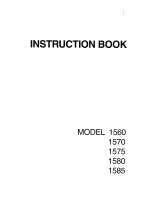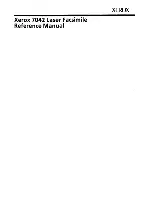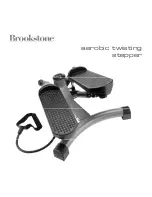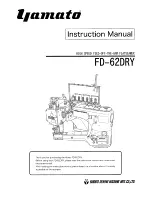
BASIC SETTINGS AND HELP FEATURE
———————————————————————————————————————————————————————————
224
■
When using Tajima embroidery data (.dst)
2
If “ON” is selected, touch
and
to
select the number of feed codes.
The desired setting is displayed.
• A value between 1 and 8 can be specified.
For example, if 3 is specified, sequential 3
jump codes will be converted to the trim
code. But sequential 2 jump codes will not
be converted to the trim code, it will be
sewed as the feed (jump) stitch.
Note
●
You need to set the jump number same as
the number that was used when the
particular Tajima data was created.
If the jump number is not matched, either
unexpected trim or no trimming at trim
expected point will happen.
Deleting short stitches
If embroidery data other than our original patterns
are used, the stitch length may be too short,
possibly resulting in the thread or the needle
breaking. In order to prevent this problem from
occurring, the machine can be set to delete stitches
with a short stitch length. Stitches with a length less
than that specified in this function, can be deleted.
When the embroidery machine is purchased, “0.3”
was selected (delete stitches with a length of 0.3
mm or less).
1
Touch
and
to select the stitch
length.
The desired size is displayed.
• A value between 0 and 1 millimeters if the
units of measurements is set to “mm” (or a
value between 0 and 0.04 inch if the units
of measurements is set to “inch”) can be
specified.
Note
●
If the setting is changed from the previous
setting, the new setting is only applied to
the next embroidery.
Summary of Contents for Enterprise BNT10L
Page 1: ......
Page 150: ...EMBROIDERING SETTINGS 148...
Page 216: ...SELECTING EDITING SAVING PATTERNS 214...
Page 302: ...APPENDIX 300 If any of the following messages appear consult your nearest Baby Lock retailer...
Page 303: ...Troubleshooting 301 7...
Page 308: ...APPENDIX 306...
Page 312: ...English 884 T11 XF0036 001 Printed in Taiwan...































